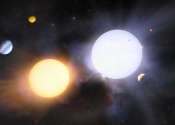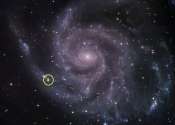News from 'El Gordo': Study suggests dark matter may have collisional properties after all
Contrary to what is established by the standard model, dark matter may indeed be self-interacting. This was the conclusion of a piece of research published in Astronomy & Astrophysics and conducted by Riccardo Valdarnini ...









